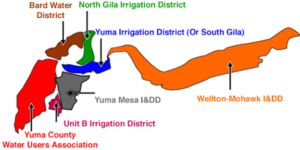Result for: Crops: Apples Broccoli Cauliflower Celery Lettuce 4R Practices: Rate Time Place
Spatial and Temporal N Management for Irrigated Vegetable Production Systems
Lead Researcher:
Dr. Charles Sanchez
Professor
University of Arizona
Start Date: 2019
End Date: 2022
Project Summary
Intensive vegetable production in the desert receives large annual applications of nitrogen (N) fertilizers. Soils in the southwestern United States are generally low in organic matter and amounts of N applied range from 200 to 400 kg/ha. Crop recoveries are less than 50%. There are numerous possible fates of fertilizer applied N in addition to the desired outcome of crop uptake. Over the past 15 years, researchers with the University of California and University of Arizona have developed strategies for efficient nutrient management. For N, these practices include fertilizer timing, pre-side dress plant and soil testing, and improved irrigation management. However, these guidelines have been applied to uniform management schemes in spite of the fact that fields often show considerable variation in soil properties. In-field soil textural variation is a significant factor affecting the mobility and availability of N. The prospect of variable rate (VRT) pre-plant and in-season N fertilizer application has not been evaluated in desert vegetable cropping systems. Certainly, varying N fertilizer applications by soil management zone makes sense. Further, emerging optical sensor technologies expand opportunities for in-season N management. We have evaluated VRT for pre-plant P fertilization in the desert. However, data exploring the potential for using VRT for N management is limited.

Studies conducted within Bard Water District, Yuma County Water Users Association, and Yuma Irrigation District in 2019-2020.

